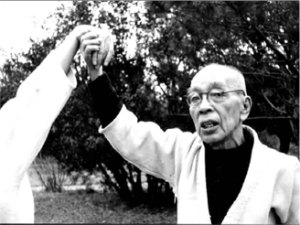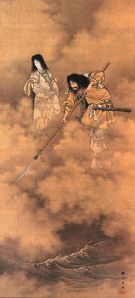From Shiro Kuma's Weblog by kumafr
In one of my previous posts I quoted Hatsumi sensei saying that a true master should be able to “laugh while facing the ennemy”.
This is quite similar to what Toda Shinryûken Masamitsu, Takamatsu sensei grandfather (or uncle*) once told him:
“Never talk about knowledge as you could lose it,
Confront a defeat with a smile even if you are closely facing it,
And even when you are faced with certain
death, die laughing!”
This year’s theme is Rokkon Shôjô so keep smiling whatever hardship you are confronted with.
* All Bujinkan books keep repeating that Toda sensei was Takamatsu sensei‘s grandfather but recently one Japanese shihan during class said that actually Toda sensei was Takamatsu‘s uncle not grandfather…
To a Westerner the sounds for ojiisan (grandfather) are very much similar to ojisan (uncle). Sorrymasen. ![]()
 … Read More
… Read More


 …
…